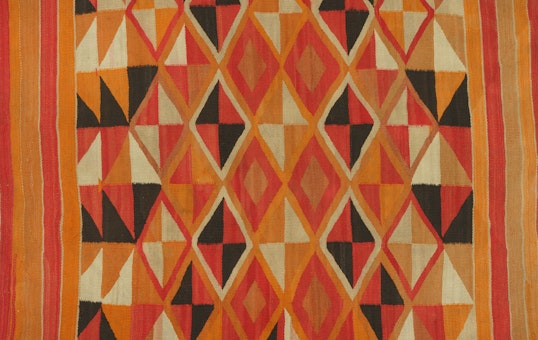
Rug (detail). Navajo, c. 1920s. Wool. 90.35.92
About the Exhibition
Water, Wind, Breath introduces art made by Pueblo and Diné (Navajo) peoples in the mountains, valleys, and mesas of present-day New Mexico and Arizona. In the Southwest, the practices of creating pottery, textiles, and jewelry hold underlying cultural values that sustain health and well-being. Through centuries of hardship and colonization, art has helped the people endure. This exhibition explores these histories while celebrating Po-wa-ha (water-wind-breath), a term used by the Tewa Pueblos to describe the flow of energy that animates all existence and the practices that nourish life.
Historic pottery, textiles, and jewelry that Dr. Albert Barnes collected in Santa Fe and Taos, New Mexico, during the 1930s are brought together with works by contemporary Native artists to highlight the connections between historic pieces and modern practices. Now, as always, creating is central to staying well.
Water, Wind, Breath: Southwest Native Art in Community is co-curated by Lucy Fowler Williams, associate curator-in-charge and Jeremy A. Sabloff Senior Keeper of American Collections at the University of Pennsylvania Museum of Archaeology and Anthropology, Philadelphia, and Tony Chavarria (Santa Clara Pueblo), curator of ethnology at the Museum of Indian Arts and Culture, Santa Fe.
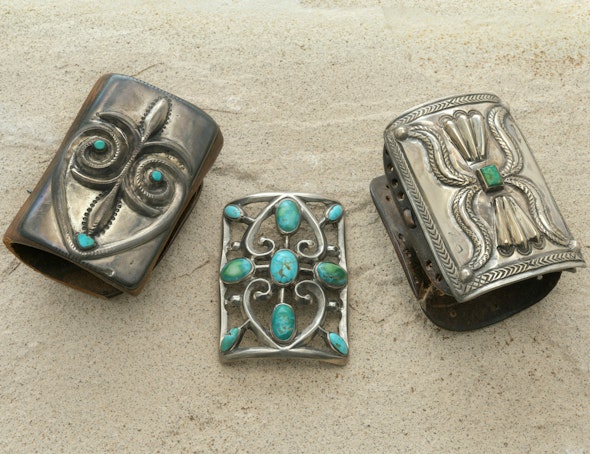
Left: Ketoh (bow guard), Navajo, c. 1900. Silver alloy from ingots, turquoise, leather, copper alloy. A186. Center: Ketoh, Navajo, c. 1900–1910. Silver alloy from ingots, turquoise, copper alloy. A91. Right: Ketoh, Navajo, c. 1890–1910. Silver alloy from ingots, turquoise, leather, copper alloy. 01.34.01

Serape, Navajo, c. 1875. Wool. 01.24.05
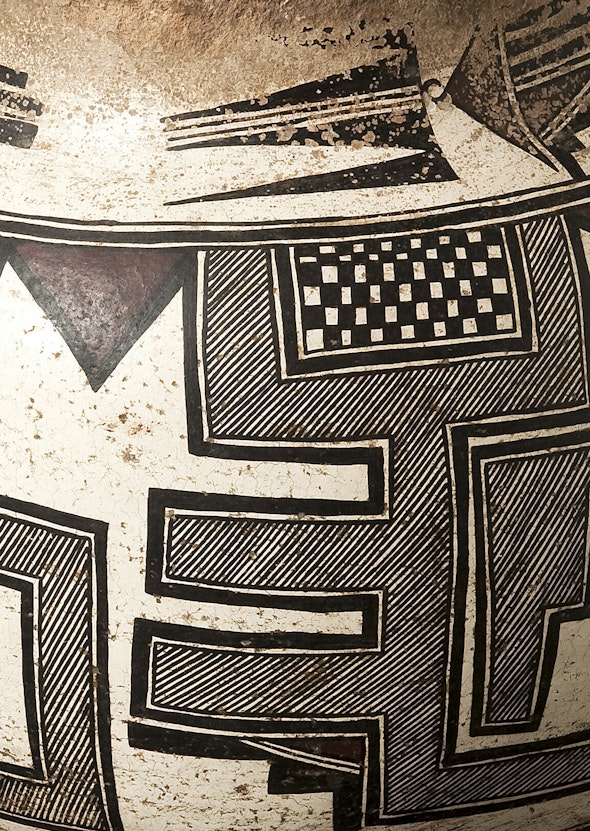
Olla (water jar) (detail), Zuni Pueblo, c. 1800–1820. Fired clay, temper, slip. A359
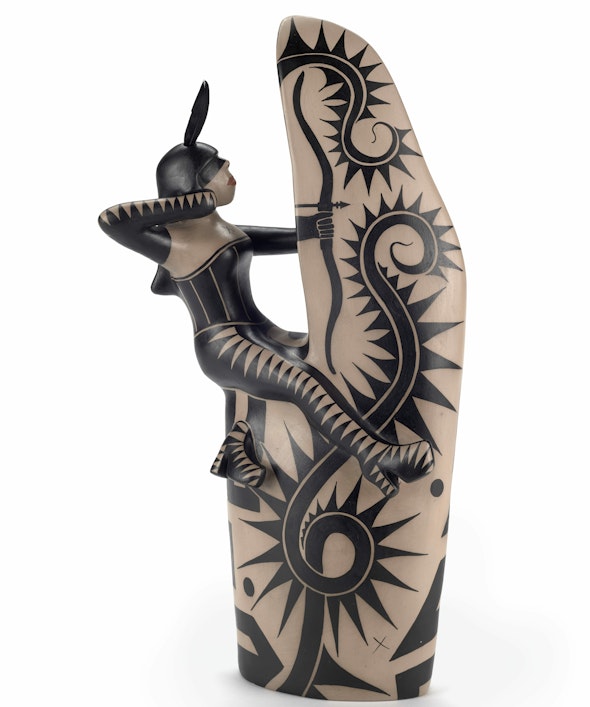
Virgil Ortiz (Cochiti Pueblo, b. 1969). Tahu, c. 2011. Fired clay, slip, wild spinach paint. Denver Art Museum, gift of Nancy L. Harris. © Virgil Ortiz / Courtesy of Denver Art Museum
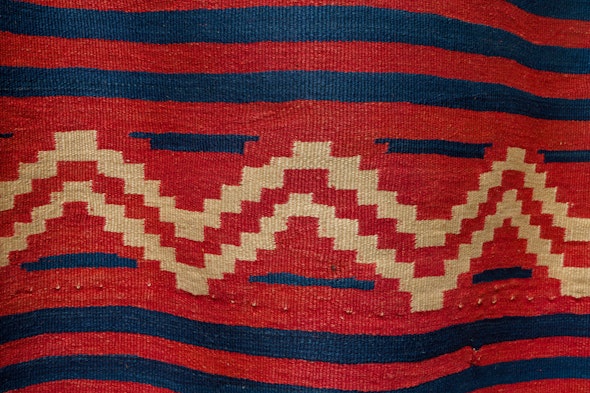
Serape (detail), Navajo, c. 1860. Wool. 01.24.03
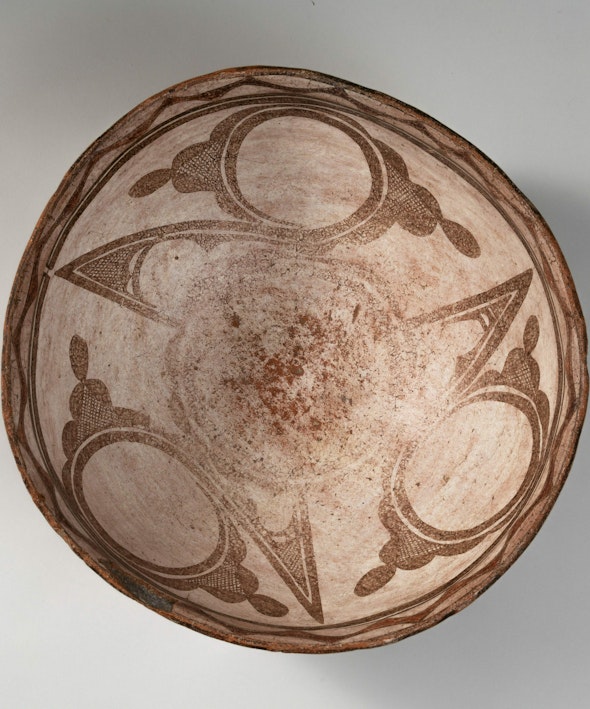
Food Bowl, Zuni Pueblo, c. 1880. Fired clay, temper, slip

Squash Blossom Necklace, Navajo, c. 1910–15. Silver alloy from ingots, turquoise, leather. A69

Melissa Cody (Navajo, b. 1983). 4th Dimension, 2016. Wool. Private collection. © Melissa Cody
Featured Contemporary Artists
D. Y. Begay (Diné/Navajo, b. 1953)
Gail Bird (Kewa/Laguna Pueblos, b. 1949)
Melissa Cody (Diné/Navajo, b. 1983)
Jason Garcia (Santa Clara Pueblo, b. 1973)
Isabel Gonzales (Jemez/San Ildefonso Pueblos, b. 1949)
Yazzie Johnson (Diné/Navajo, b. 1946)
Clarence Lee (Diné/Navajo, 1952–2011)
Lorraine Gala Lewis (Laguna/Taos/Hopi Pueblos, b. 1961)
Charles Loloma (Hopi, 1921–1991)
TahNibaa Naataanii (Diné/Navajo, b. 1967)
Gabrielita Nave (Ohkay Owingeh, b. c. 1940)
Barbara Teller Ornelas (Diné/Navajo, b. 1954)
Virgil Ortiz (Cochiti Pueblo, b. 1969)
Angie Reano Owen (Kewa Pueblo, b. 1946)
Norbert Peshlakai (Diné/Navajo, b. 1953)
McKee Platero (Diné/Navajo, b. 1957)
Cara Romero (Chemehuevi, b. 1977)
Diego Romero (Cochiti Pueblo, b. 1964)
Ramona Sakiestewa (Hopi, b. 1948)
Sonwai (Verma Nequatewa) (Hopi, b. 1949)
Roxanne Swentzell (Santa Clara Pueblo, b. 1962)
Shawn Tafoya (Santa Clara/Pojoaque Pueblos, b. 1968)
Edith Tsabetsaye (Zuni Pueblo, b. 1940)
Larry Vigil (Nambé Pueblo, 1946–2015)
Lonnie Vigil (Nambé Pueblo, b. 1949)
Emmi Whitehorse (Diné/Navajo, b. 1956)
Debra Yepa-Pappan (Jemez Pueblo/Korean, b. 1971)
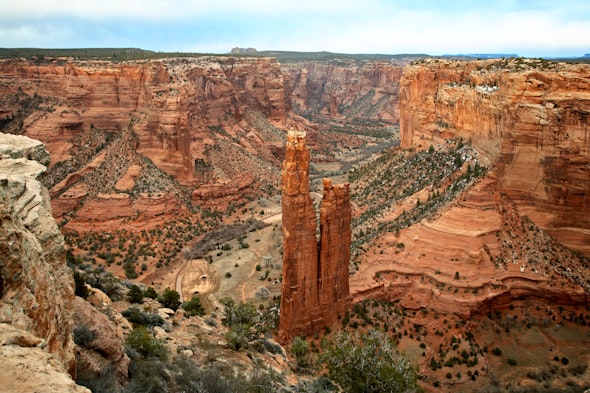
Spider Rock, home of the deity Na’ashjéii Asdzáá (Spider Woman), who brought weaving to the Diné. Canyon de Chelly National Monument, Arizona. Efrain Padro / Alamy Stock Photo
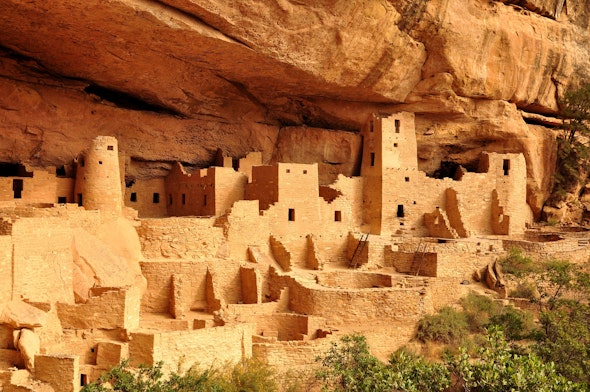
Ancestral Pueblo cliff dwelling, Mesa Verde, Colorado. Kravka / Alamy Stock Photo
CATALOGUE
Water, Wind, Breath: Southwest Native Art in the Barnes Foundation
Copublished by the Barnes and Yale University Press and edited by co-curator Lucy Fowler Williams, this richly illustrated book explores the Barnes’s Pueblo and Navajo collections alongside works by contemporary Native American artists. The catalogue blends postcolonial and Indigenous perspectives, featuring contributions from exhibition co-curator Tony Chavarria, artist TahNibaa Naataanii, and Native American art specialists Ken Williams, Jr., Robert Bauver, and Laurie D. Webster. Hardcover; 224 pages
Sponsors
This exhibition is sponsored by:
Ongoing support for exhibitions comes from the Christine and Michael Angelakis Exhibition Fund, the Jill and Sheldon Bonovitz Exhibition Fund, the Horace W. Goldsmith Foundation, and Aileen and Brian Roberts.
In addition, support for all exhibitions comes from contributors to the Barnes Foundation Exhibition Fund:
Joan Carter and John Aglialoro, Julia and David Fleischner, Leigh and John Middleton, Jeanette and Joe Neubauer
John Alchin and Hal Marryatt, Jill and Sheldon Bonovitz, Lois and Julian Brodsky, N. Judith Broudy, Laura and Bill Buck, Elaine W. Camarda and A. Morris Williams, Jr., Eugene and Michelle Dubay, Penelope P. Harris, Christine and George Henisee, Jones & Wajahat Family, Lisa D. Kabnick and John H. McFadden, Marguerite Lenfest, Maribeth and Steven Lerner, Victoria McNeil Le Vine, Leslie Miller and Richard Worley Foundation, Hilarie and Mitchell Morgan, The Park Family, The Rittenhouse Hotel, Adele K. Schaeffer, Katie and Tony Schaeffer, Dr. and Mrs. Eugene E. Stark, Joan F. Thalheimer, Bruce and Robbi Toll, van Beuren Charitable Foundation, Kirsten White, Anonymous.
Land Acknowledgment
The Barnes Foundation is situated in Lenapehoking, the ancestral homeland of the Lenape people. We acknowledge and honor their enduring relationship to this land and commit to serving as responsible stewards of it, guided by their knowledge and culture. All Lenape people—those still in the region, and those driven from it by European and American colonizers—are welcomed back to this piece of their homeland, and we invite all people to join us with the Lenape and other Indigenous peoples to build a more inclusive and equitable learning space for present and future generations.





